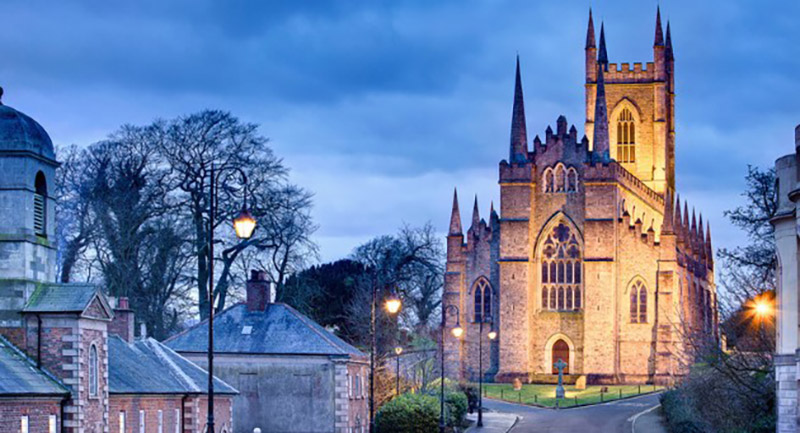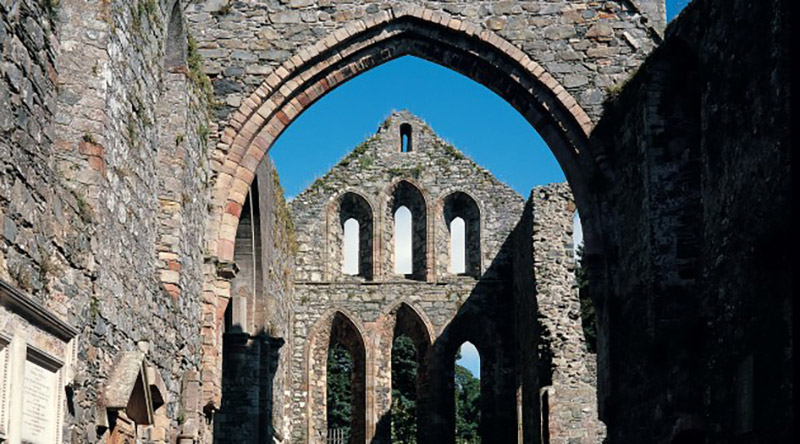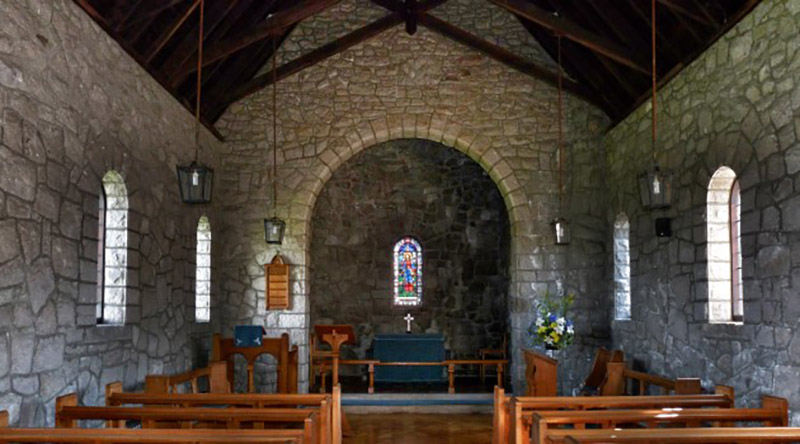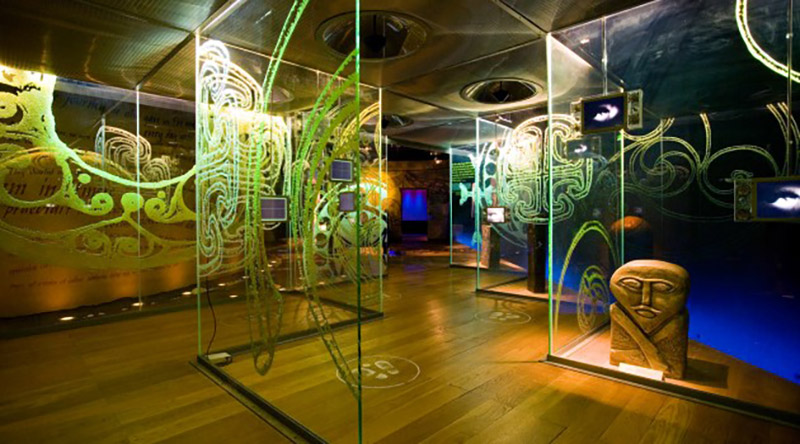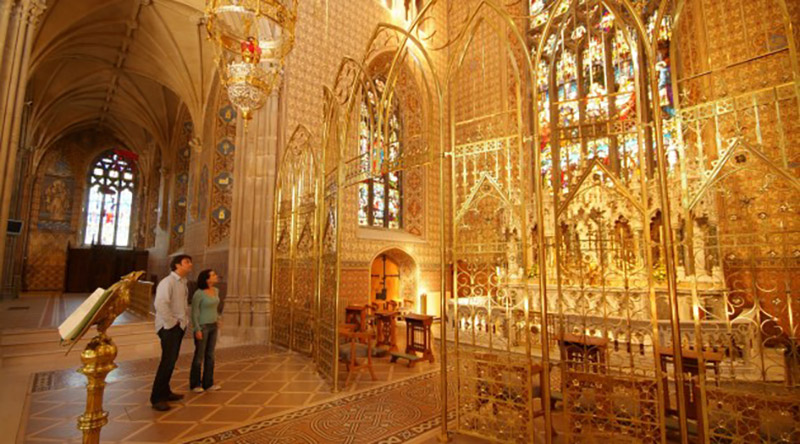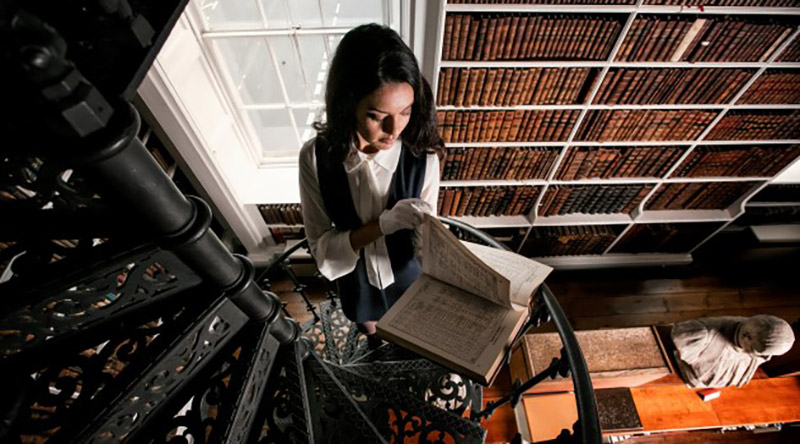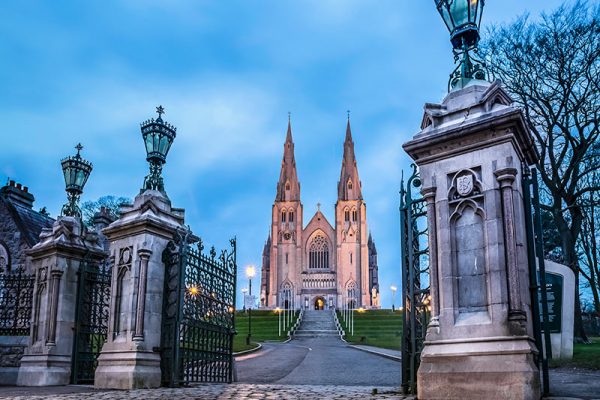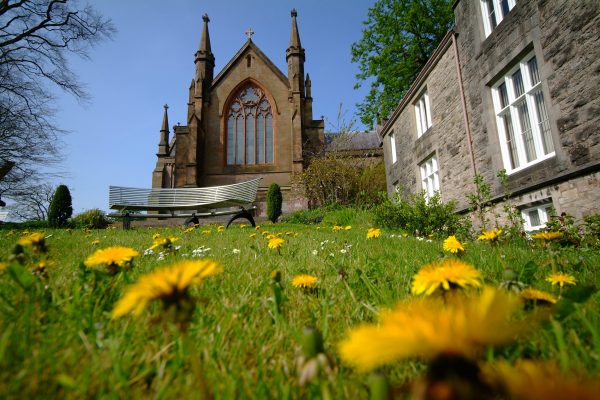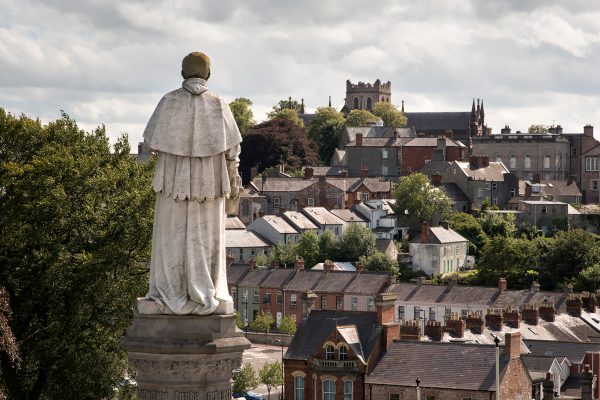Down Cathedral can also be seen from the vast ruins of Inch Abbey. Situated in peaceful surroundings beside the River Quoille, this Cistercian Abbey was founded in 1180 by John de Courcy, who led the 1177 Anglo-Norman Invasion of Ulster. For a truly interactive experience, The Saint Patrick’s Centre takes you on a journey using film and video. The exhibition focuses on Patrick’s own words, drawn from a confession made near the end of his life. Also nearby, is Down County Museum, a Georgian county gaol, with an impressive collection of early Christian artefacts from carved stone crosses to works of art and material relating to the saint.
The legacy of Patrick’s work can be found in Bagenal’s Castle, Newry. It was at this site, in 1157, that the Cistercian abbey was founded. Little remains of the abbey today, but excavations have revealed human remains, pottery and a 12th century slab of granite bearing a Celtic cross.

